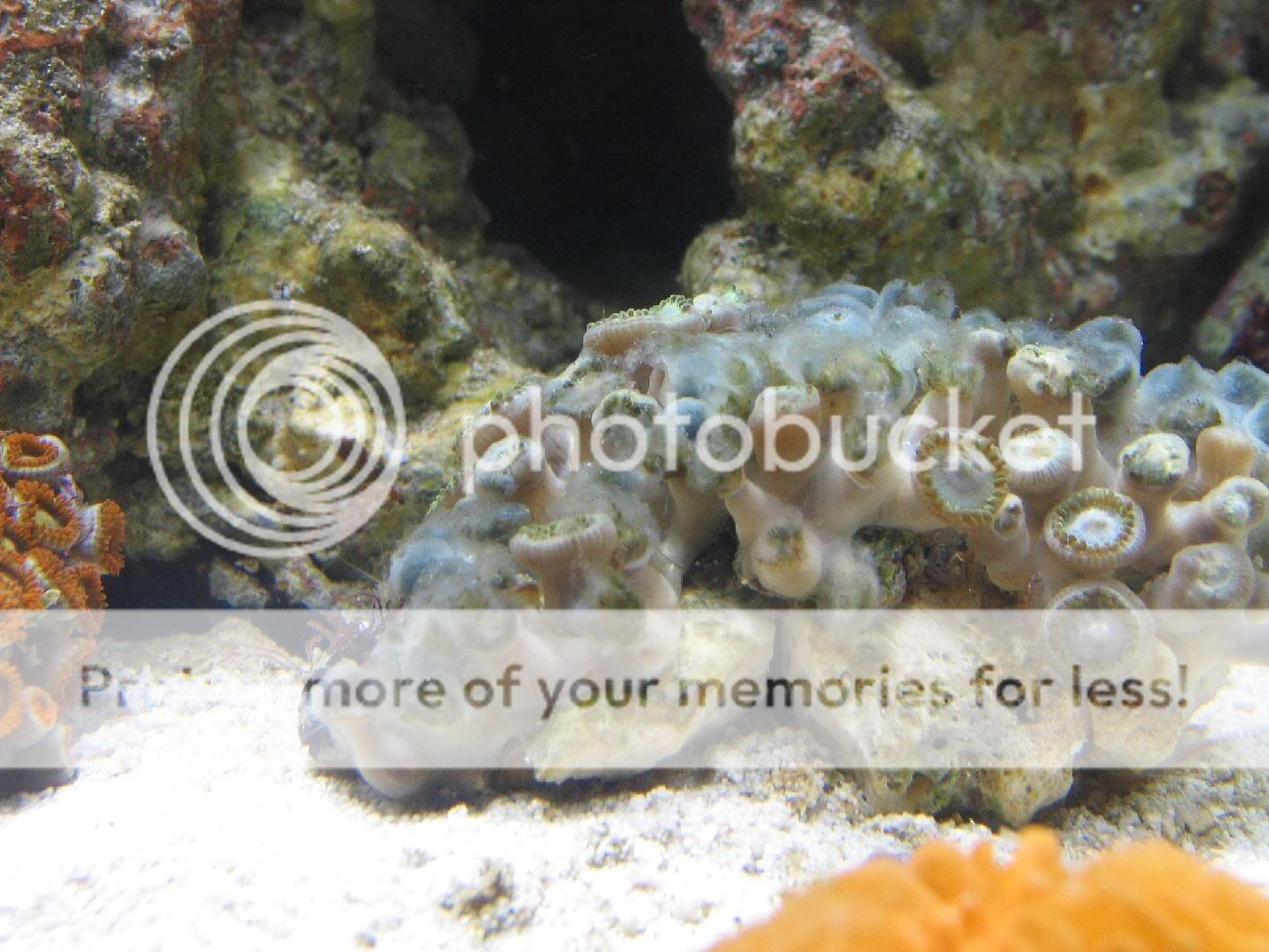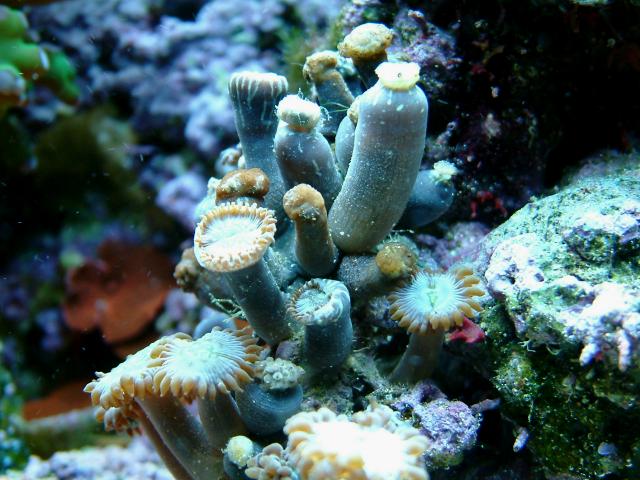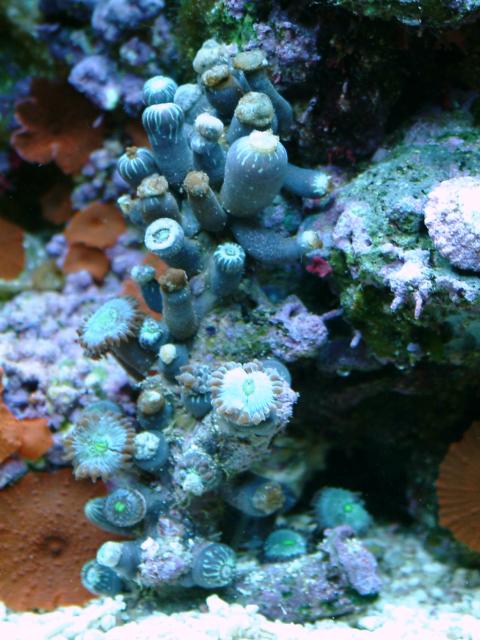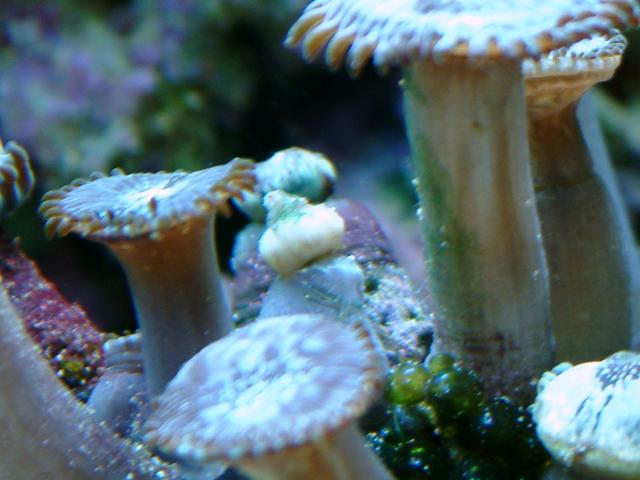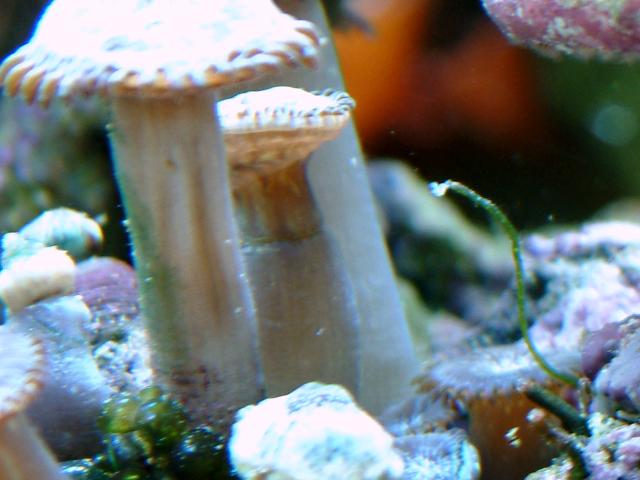I stopped photographing after the losses started out-numbering survivors, but you're welcome to my photo-collection of the dead.
Marc: I hope you aren't losing your big-teal-pinks... Mine were pretty hard hit during my tank transfer and aren't recovering well. I have one grow-out left (9 polyps) and the 'Mother colony' was knocked down to 3 scattered polyps.
A collection of images covering some of my recent loses:
Baby-blues on a rock shared with some greens - bb's totally lost, greens weren't touched
An intermittent strike - some of these Halloweens survived, but have yet to really recover
Then it spread to my 'Mean Greens' - killed most, the rest are not recovering well (still shrinking)
Left me 3 of these (out of 7) - one new polyp since the 'plague' disappeared
Another doubly-colonized rock. One color-morph was destroyed, another left untouched.
An example of what Marc mentions above (the big-polyps looking strangled)
Most painful losses - PPEs - still have 6, though one is still slowly shrinking and no new buds have emerged since the fuzzy-bloated-white-ceesy-death swooped in...
These green-mouthed, pink accented large-polyps went really quick (from 20+ to these in just a couple days... these didn't last for more than another day
These may have been what introduced the white-death to my tank. Bought a poorly-shipped/stressed colony and removed all of the dead/dyding and many of the healthy polyps. Then attached the few healthy polyps to rubble and acclimated them...
What over-took the last stand of 'metal-reds' in my tank and seemed to signal the end of the plague - more red-fuzzy than white-fuzzy
The plague in my case, started before a tank-transfer and carried over into the new tank for a little over a month (last bit of December and most of January). Tank parameters were stable for the most part, but I did have small cycling spikes the two weeks following the transfer (middle of the plague). Temp is kept at 80* constant and lighting consists of an 8hr MH cycle (250w 10KK over one side - other side left more bare until second MH is installed) supplemented with 12hr photoperiod for the 112w of Actinic (03) PC lights.
Currently ammonia, nitrite and nitrate are testing zeros across. Calcium in the 430 range (supplement Kalkwasser for top-off). I perform 10gallon water changes on the 75g tank every two weeks and use a DSB as well.
Hope the details can help...


